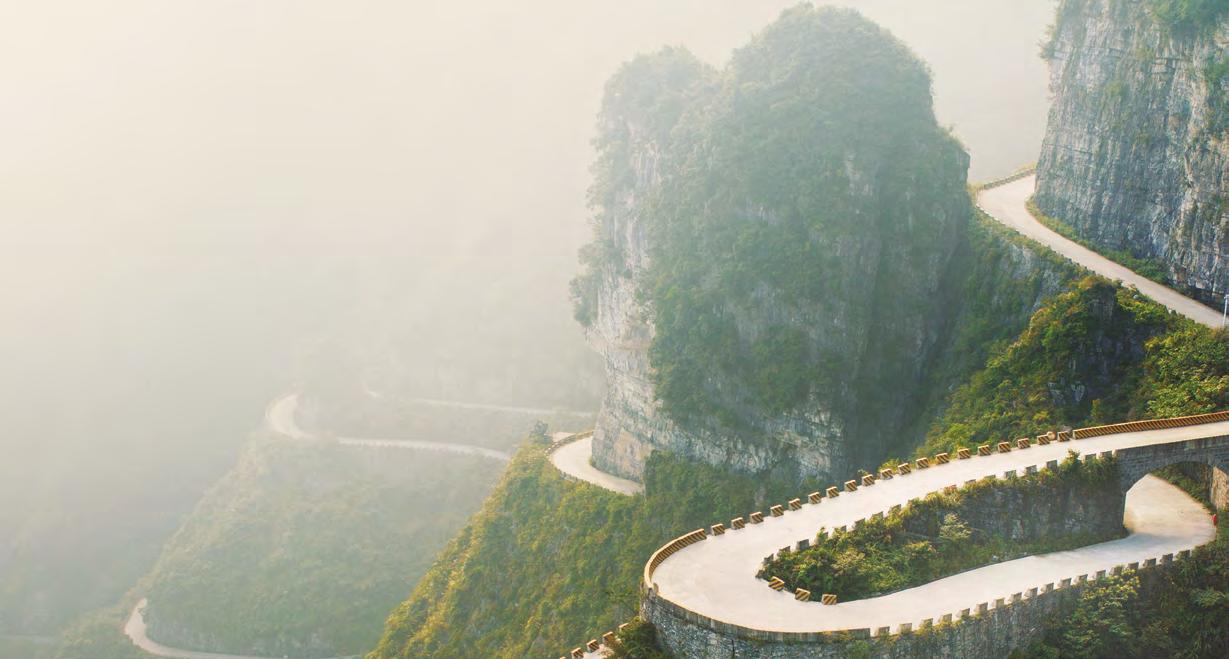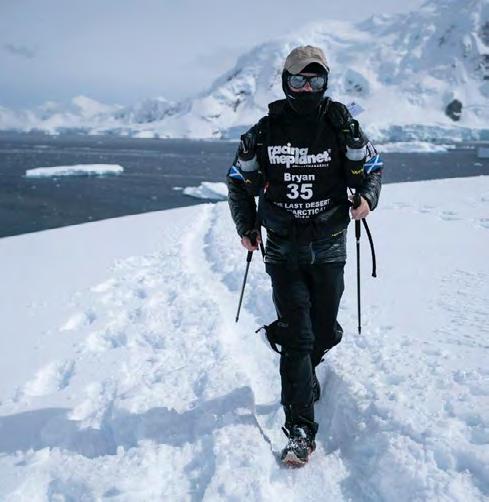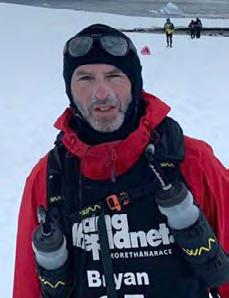
6 minute read
Shareholder Rights Directive – It’s Time For Asia-Pacific Firms To Act
Back in June 2019, the European Union (EU) announced its first deadline for member states to implement components of the Shareholder Rights Directive II (SRD II) into national laws. Most importantly, all different member states will establish their own related laws and legal definitions based on the overall Directive.
For financial intermediaries in APAC, the scope of the Directive is more far-reaching than most realise and will impact a variety of intermediaries across the region. This is important to investors considering that in March the European Commission (EC) found that between 2007 and 2017 investors across China, Hong Kong and Macau controlled 1.6% (over EUR 280 billion) of EU company assets. During the same period, investors in Australia and New Zealand controlled 3% (over half a trillion) of all EU company assets.
The countdown has thus begun for APAC intermediaries and asset owners who either serve EU shareholders or hold shares in EU equities to know exactly how shareholder rights will change and what will be required to ensure full compliance in less than 12 months’ time.
Wide-ranging action
Two core groups within the APAC financial community stand to be most affected – intermediaries and asset owners.
SRD II will introduce three critical regulatory concepts:
1) Shareholder identification: EU-based issuers will be entitled to obtain the identity of their shareholders, requiring APAC intermediaries holding shares in them to provide shareholder disclosure within 24 hours of receiving a request.
2) Agenda distribution and voting: APAC intermediaries must support the distribution of meeting agendas within stricter timeframes, reconcile votes on a daily basis, and process votes “without delay”, or face penalties.
3) Vote confirmation: APAC intermediaries will need to support all aspects of vote confirmation throughout the chain, including the timely electronic confirmation of receipt, dissemination of post-meeting results and vote tabulations.
Timely action
Strengthened shareholder rights mean that intermediaries must adapt quickly to new requirements on how data is passed along the investor communications chain. The implementation of electronic proxy voting systems will become an increasingly urgent priority with many seeking to optimise the proxy lifecycle.
An upside to SRD II is the opportunity for greater engagement between APAC investors and issuers in EU markets than ever before. Likewise, Europeanlisted companies will now be able to identify APAC shareholders.
The EC has left each country to transpose the directive into local legislation and several markets have yet to complete this process. However, with less than 12 months remaining, now is the time for APAC intermediaries to begin preparing for SRD II.
Demi Derem General Manager Investor Communication Solutions International Broadridge Financial Solutions

A Scot In The Antarctic

On the outbound journey we pitched to 22 degrees, while on the return leg we got the full “Drake Shake” with rolls of up to 37 degrees. It autocorrects the roll to 45 degrees, but even at 22 it feels as though the ship is about to capsize. It still beggars belief to think that Shackleton and his crew crossed the 1,300kms of the Southern Ocean in a 22ft lifeboat.
It’s all too easy to get caught up in the trivialities of modern-day life, but it’s hard not to have a very healthy sense of perspective when your ship is being tossed around in a Force 10 storm in the Drake Passage, rolling 22 degrees side-to-side as you cross 1000km of the Southern Ocean on your way to Antarctica.
This journey was the culmination of my mission to complete the 4Deserts Race Series. Each race is a 250km self-supported foot-race through some of the most challenging environments on earth. In order to qualify for Antarctica, competitors need to have finished at least three other 250kms races and I had completed the Atacama in 2013, Gobi in 2016, and Namib Desert in 2017. This was the final hurdle.

We set out from Ushuaia on the southern tip of Patagonian Argentina on 23rd November on the 1000km journey to the South Shetland Islands in the northern most tip of Antarctica.
The Drake is the roughest stretch of water in the world. Waves of up to 10m are not uncommon. Anything not nailed down to the ship is thrown around and there was a plentiful supply of sick bags on hand for those unfortunate enough to be struck down by sea-sickness. We crossed the passage in the M.V. Plancius, a 3,200 tonnes former Dutch naval vessel. But it was still tossed around in Force 10 winds (12 is a hurricane) like a toy boat as we were rocked by 8m swells.
As the storms subsided, we began to pick up blue whales, killer whales and fin whales, particularly as enormous icebergs and land loomed into sight.
The 1959 Antarctic Treaty, designated the continent as “a natural reserve, devoted to peace and science”. There are very strict rules about preserving the natural environment and it’s not possible to land, camp or bring food, seeds or other organic material onto Antarctica for fear of contaminating the fragile eco-system.

Given restrictions on camping, the format was to sleep overnight on the ship and for competitors to be ferried by Zodiac speedboats to shore for the start of each stage. Once on land competitors would run as far as possible in the allotted time. If temperatures dropped below -20C then the stage would be curtailed as there’s a much higher chance of frostbite and hypothermia. The stage would also be shortened by high winds as it would be dangerous to ferry everyone back to the ship.
Stage 1 was set on King George’s Island, a base for the Uruguayan, Russian and Chinese research stations. The route was an undulating 13.3km circuit which took us from the shoreline to a highpoint at the Uruguayan base. It was set for 10 hours and began in blizzard conditions with a bone-chilling wind cutting through the field. The wind-chill was breathtaking and whipped across the island. The course had significant elevation and the exposed sections were brutally cold. The underfoot conditions varied from knee-deep snow (bad), packed snow / ice (good), slush (bad) ice water (very bad). Most of us pitched into kneedeep water at least once and one competitor unfortunately found herself waist deep in ice-water at one point.
It’s impossible to stay warm when you’re wet for ten hours. It seeps deep into your bones. If you stop then your body temperature drops dramatically and so you need to keep going. Nutrition took the form of gels and pre-made energy drinks. It’s not enough energy for ten hours and eventually took its toll.
On a number of occasions I had to remove gloves to adjust equipment. Within seconds my hands were shaking. I knew it wasn’t cold enough for frostbite but it certainly felt like it. Everyone ground out Stage 1 and I managed to cover 49kms in 10 hours.
The Plancius then sailed overnight to Danco Island, for Stage 2. Danco is home to a large colony of Gentu penguins who looked somewhat bemused as 49 runners climbed up and down the 3km switchback loop to the top of a hill overlooking the bay. The snow was knee-deep for most of the day, which made for slow going and it was an uphill slog for three and a half hours. With little complaint the stage was cut short by incoming storms.
Stage 3 ran for 10 hours in the deep snow and spectacular setting of Paradise Bay. All around us we could hear the grinding and creaking of glaciers. And every so often, we would witness the real-time impact of climate change, with the deafening crash of glaciers breaking off and collapsing into the sea to form icebergs. You’ve never seen colours like these. Everything is imbued with an almost fluorescent blue and the sun was blindingly bright. Despite the length of the stage it was almost pleasant to run in the cold sun in the shelter of the bay.
Stage 4 at Damoy Point was our southernmost stop. The shoreline was bitterly cold and exposed, while the inland section had more respite and shelter.
This was a 10 hour stage of cutting wind and blizzards, none of which seemed to have much effect on the nearby penguins. They would criss-cross the course on their way to and from the colony and competitors would amusingly give way to let them pass. This would be our final stage as the weather forced us to depart early to get ahead of a looming storm.
I had been struggling with a chest infection for most of the week and was very happy to finish in 18th place on 156kms. The winner, Wong Ho Chung from Hong Kong, completed a remarkable 251.28kms over the four stages. Looking back almost one year later, the sheer immensity of Antarctica is still staggering. Nothing is to scale. The eerie stillness in the quiet bays, the deafening roar of the collapsing glaciers, the bone-chilling winds that cut you in two, the blizzards, the blinding summer sunlight, the blue hue that washes over the whole alien landscape. It’s our last great wilderness and unfortunately it’s melting away before our eyes. As I said at the outset, it’s all about perspective, and it’s hard not to come away from Antarctica without a very acute sense of our own place in the world.




Bryan Murphy APAC Head of Financial Institutions Sales, Citi









